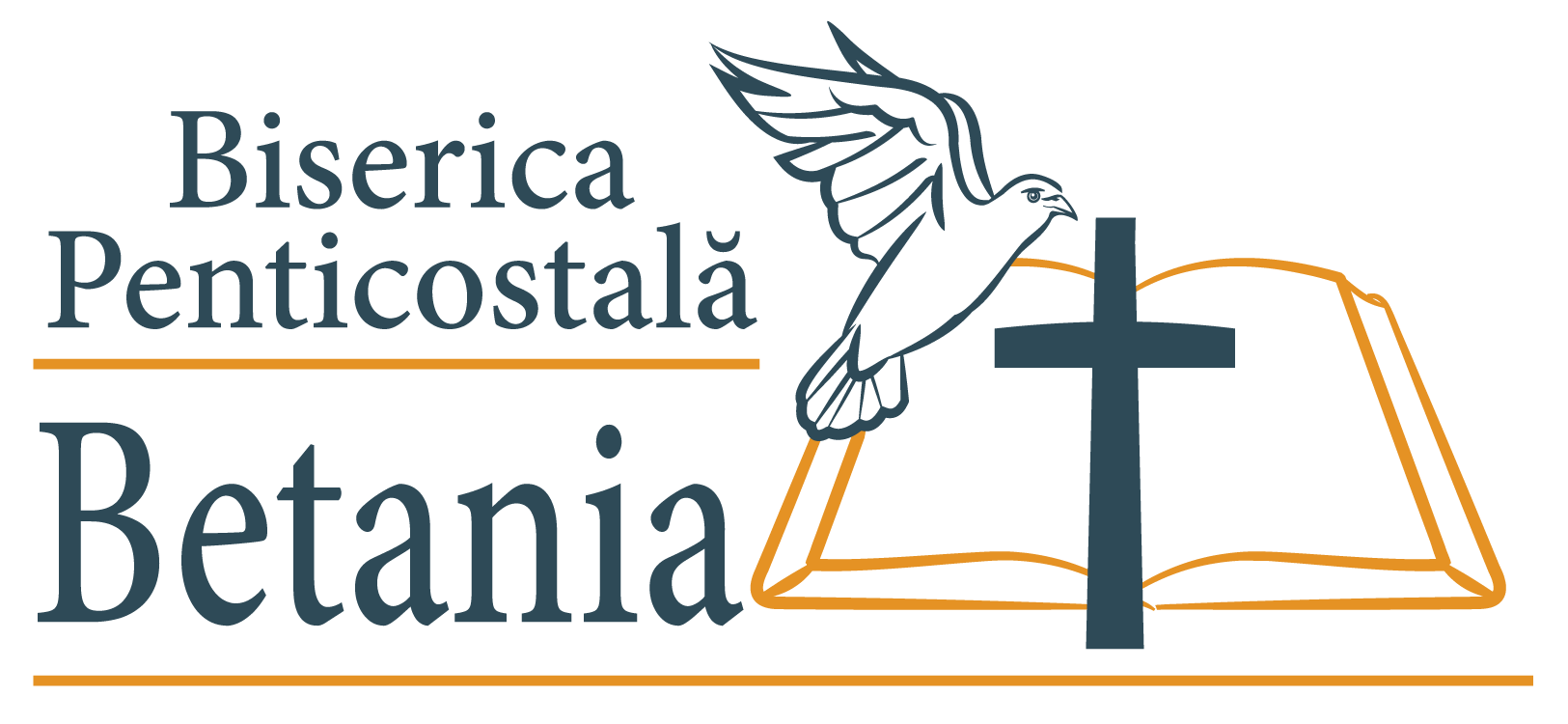12 octombrie
12 octombrie
Duminică, 12 octombrie 2025, Ioan 8:1-59
Ioan 8 descrie ostilitatea liderilor religioși și intenția lor de a-L ucide pe Isus Hristos (vers. 59).
Acest conflict început în capitolele anterioare crește în intensitate și este amplificat de evenimentele menționate în prezentul capitol:
a) Iertarea femeii prinse în adulter: har, lege și conștiință (vers. 1–11)
b) Identitatea Mântuitorului: „Eu sunt Lumina lumii” și dezbaterea despre mărturia Sa (vers. 12–20)
c) Originea lui Isus: avertismentul despre păcat și necredință (vers. 21–30)
d) Ucenicia adevărată: adevărul eliberează de robia păcatului (vers. 31–38)
e) Polarizarea urmașilor: „Fiii lui Avraam” vs. „fiii diavolului”; criteriul este ascultarea de adevăr (vers. 39–47)
f) Revendicarea eternității: „Înainte de Avraam, EU SUNT”, punctul de maximă tensiune și tendința evreilor de lapidare (uciderea cu pietre) (vers. 48–59).
Ioan 8 este un capitol al contrastelor: milă vs. condamnare, lumină vs. întuneric, adevăr vs. minciună, libertate vs. robie spirituală.
Le vom lua împreună pe rând:
1. Femeia prinsă în adulter – Harul care împlinește Legea (vers. 1–11)
Fariseii aduc o femeie prinsă în adulter cu scopul „…ca să-L ispitească și să-L poată învinui” (vers. 6).
Legea cere ca ambii parteneri să fie pedepsiți: „Dacă se va găsi un bărbat culcat cu o femeie măritată, să moară amândoi…” (Deuteronom 22:22a).
Absența bărbatului sugerează intenția lor josnică (vers. 6). Cel mai probabil au înscenat acest adulter pentru a avea un argument de incriminare — o femeie păcătoasă iertată de Hristos, care „compromite” Legea și protejează păcătoșii.
Mântuitorul evită capcana juridică întinsă de farisei prin folosirea principiului Universalității Vinovăției: „Cine dintre voi este fără păcat…” (vers. 7). El iartă păcatul femeii sub condiția să trăiască în sfințenie: „…să nu mai păcătuiești.” (vers. 11)
Harul nu banalizează păcatul, însă îl iartă pe păcătos și îl cheamă la transformare. Scopul lor a fost să-L pună pe Isus în conflict cu Moise: „Moise, în Lege, ne-a poruncit să ucidem cu pietre pe astfel de femei: Tu dar ce zici?” (vers. 5). Ei foloseau adevărul pentru a manipula, nu pentru a face dreptate.
2. Isus – Lumina lumii (vers. 12–20)
Pentru a înțelege forța acestei afirmații trebuie să înțelegem contextul în care a fost rostită. Se aflau în curtea Templului în timpul sărbătorii Corturilor, sărbătoare care comemora călătoria evreilor prin pustie, sub călăuzirea stâlpului de nor și de foc trimis de Dumnezeu. În timpul acestei sărbători, în curtea Templului erau aprinse candelabre uriașe, iar lumina lor simboliza prezența divină care a călăuzit Israelul.
În mijlocul acestei ceremonii, Domnul rostește „Eu sunt Lumina lumii; cine Mă urmează pe Mine nu va umbla în întuneric, ci va avea lumina vieții.” (vers. 12)
Aceasta înseamnă că cine Îl urmează are discernământ moral, călăuzire, viziune, își cunoaște originea și destinația.
Fariseii contestă afirmația Mântuitorului sub pretextul că este invalidă prin absența martorilor: „…fariseii I-au zis: «Tu mărturisești despre Tine Însuți: deci mărturia Ta nu este adevărată.»” (vers. 13).
Isus argumentează că Tatăl mărturisește despre El (vers. 18).
3. Credința în adevărul care eliberează (vers. 21–30)
Necredința deconectează omul de la sursa eternă a vieții: „Veți muri în păcatele voastre” (vers. 24).
Credința deplină în Hristos eliberează din robia păcatului: „Veți cunoaște adevărul, și adevărul vă va face liberi.” (vers. 32)
Isus avertizează: „Dacă nu credeți… veți muri în păcatele voastre” (vers. 24).
Mulți au crezut pe baza cuvintelor Sale: „Pe când vorbea Isus astfel, mulți au crezut în El.” (vers. 30).
Credința se naște atunci când omul aude Cuvântul lui Dumnezeu. De aceea evanghelizarea și misiunea sunt absolut indispensabile.
4. Ucenicia autentică – Adevărul care maturizează (vers. 31–38)
Convertirea conduce la maturizare: „Și a zis iudeilor care crezuseră în El: «Dacă rămâneți în cuvântul Meu, sunteți în adevăr ucenicii Mei; veți cunoaște adevărul, și adevărul vă va face slobozi.»” (vers. 31)
Înțelegerea Cuvântului sfânt va conduce la maturizare și libertate în Hristos – o viață plenară, împlinită și disponibilă pentru împlinirea intereselor lui Dumnezeu.
5. „Eu sunt” înainte de Avraam (vers. 39–59)
Fariseii pretind că sunt fii ai lui Avraam, dar nu trăiesc în credință (vers. 39–40). Hristos îi confruntă și le spune că atunci când resping adevărul și iubesc minciuna: „Voi aveți de tată pe diavolul” (vers. 44).
Ascultarea este semnul apartenenței la Dumnezeu (vers. 47).
Mântuitorul proclamă superioritatea Sa față de Avraam:
Avraam „a văzut ziua Mea și s-a bucurat” (vers. 56).
„Înainte de Avraam să fi fost, EU SUNT.” (vers. 58).
Isus nu spune „am fost” înainte de Avraam, ci „sunt”, folosind timpul prezent. Această afirmație pare de neînțeles pentru o minte obișnuită cu realitățile vieții umane: naștere, creștere, îmbătrânire și moarte. Dar tocmai aici stă esența mesajului lui Isus.
Ce înseamnă „Eu sunt” înainte de Avraam?
(a) Revendicarea eternității – indică existența Sa atemporală, dincolo de limitele timpului uman. El nu doar că a existat înainte de Avraam, ci există dintotdeauna, fără început și fără sfârșit.
(b) Referință directă la Dumnezeu – Expresia „Eu sunt” este aceeași pe care Dumnezeu o folosește în V.T. când i Se descoperă lui Moise: „Eu sunt Cel ce sunt.” (Exod 3:14). Prin această afirmație, Isus Se identifică cu Dumnezeu.
În concluzie, adevărul nu este doar informație sau doctrină, ci o Persoană.
Să ne rugăm lui Dumnezeu pentru milă față de cei care păcătuiesc, care nu sunt convertiți sau maturi în credință.
Pastor Luigi Mițoi
Sunday, October 12, 2025, John 8:1–59
John 8 describes the hostility of the religious leaders and their intent to kill Jesus Christ (v. 59).
This conflict, which began in the previous chapters, intensifies and is amplified by the events mentioned in this chapter:
a) The forgiveness of the woman caught in adultery: grace, law, and conscience (vv. 1–11)
b) The identity of the Savior: “I am the Light of the world” and the debate over His testimony (vv. 12–20)
c) The origin of Jesus: a warning about sin and unbelief (vv. 21–30)
d) True discipleship: truth sets free from the bondage of sin (vv. 31–38)
e) The polarization of followers: “Children of Abraham” vs. “children of the devil”—the criterion is obedience to truth (vv. 39–47)
f) The claim of eternity: “Before Abraham was born, I AM,” the point of highest tension and the Jews’ attempt to stone Him (vv. 48–59).
John 8 is a chapter of contrasts: mercy vs. condemnation, light vs. darkness, truth vs. falsehood, freedom vs. spiritual bondage.
Let us consider them one by one:
1. The woman caught in adultery – Grace that fulfills the Law (vv. 1–11)
The Pharisees bring a woman caught in adultery with the purpose “…to trap Him, in order to have a basis for accusing Him.” (v. 6)
The Law requires that both partners be punished: “If a man is found sleeping with another man’s wife, both the man who slept with her and the woman must die.” (Deuteronomy 22:22a)
The absence of the man suggests their vile intention (v. 6). Most likely they staged this act of adultery to have grounds to accuse Him—a sinful woman forgiven by Christ, who “compromises” the Law and protects sinners.
The Savior avoids the legal trap set by the Pharisees by applying the principle of the universality of guilt: “Let any one of you who is without sin be the first to throw a stone at her.” (v. 7) He forgives the woman’s sin on the condition that she live in holiness: “…go now and leave your life of sin.” (v. 11)
Grace does not trivialize sin but forgives the sinner and calls him to transformation. Their goal was to pit Jesus against Moses: “In the Law, Moses commanded us to stone such women. Now what do You say?” (v. 5) They used truth to manipulate, not to do justice.
2. Jesus – The Light of the World (vv. 12–20)
To understand the power of this statement, we must grasp the context in which it was spoken. They were in the temple courts during the Feast of Tabernacles, a festival that commemorated the Israelites’ journey through the wilderness under the guidance of the pillar of cloud and fire sent by God. During this festival, huge candelabras were lit in the temple courts, and their light symbolized the divine presence that guided Israel.
In the midst of this ceremony, the Lord declares, “I am the light of the world. Whoever follows Me will never walk in darkness, but will have the light of life.” (v. 12)
This means that whoever follows Him has moral discernment, guidance, and vision—he knows his origin and his destination.
The Pharisees challenge the Savior’s statement, claiming it is invalid due to lack of witnesses: “…the Pharisees challenged Him, ‘Here You are, appearing as Your own witness; Your testimony is not valid.’” (v. 13)
Jesus argues that the Father testifies about Him (v. 18).
3. Faith in the Truth that Sets Free (vv. 21–30)
Unbelief disconnects man from the eternal source of life: “You will die in your sins.” (v. 24)
Complete faith in Christ frees from the bondage of sin: “Then you will know the truth, and the truth will set you free.” (v. 32)
Jesus warns: “If you do not believe… you will indeed die in your sins.” (v. 24)
Many believed because of His words: “Even as He spoke, many believed in Him.” (v. 30)
Faith is born when man hears the Word of God. That is why evangelism and mission are absolutely indispensable.
4. Authentic Discipleship – The Truth that Matures (vv. 31–38)
Conversion leads to maturity: “To the Jews who had believed Him, Jesus said, ‘If you hold to My teaching, you are really My disciples. Then you will know the truth, and the truth will set you free.’” (v. 31)
Understanding the holy Word leads to maturity and freedom in Christ—a full, fulfilled life made available for the fulfillment of God’s purposes.
5. “I AM” Before Abraham (vv. 39–59)
The Pharisees claim to be children of Abraham, but they do not live by faith (vv. 39–40). Christ confronts them, saying that when they reject truth and love lies, “You belong to your father, the devil.” (v. 44)
Obedience is the mark of belonging to God (v. 47).
The Savior proclaims His superiority over Abraham:
“Your father Abraham rejoiced at the thought of seeing My day; he saw it and was glad.” (v. 56)
“Before Abraham was born, I am!” (v. 58)
Jesus does not say “I was” before Abraham, but “I am,” using the present tense. This statement seems incomprehensible to a mind accustomed to the realities of human life—birth, growth, aging, and death. Yet this is the very essence of Jesus’ message.
What does “I am” before Abraham mean?
(a) The claim of eternity – It indicates His timeless existence, beyond the limits of human time. He not only existed before Abraham but has always existed—without beginning or end.
(b) A direct reference to God – The expression “I am” is the same one God used in the Old Testament when He revealed Himself to Moses: “I AM WHO I AM.” (Exodus 3:14) Through this statement, Jesus identifies Himself with God.
In conclusion, truth is not merely information or doctrine—it is a Person.
Let us pray to God for mercy toward those who sin, who are unconverted, or immature in faith.

